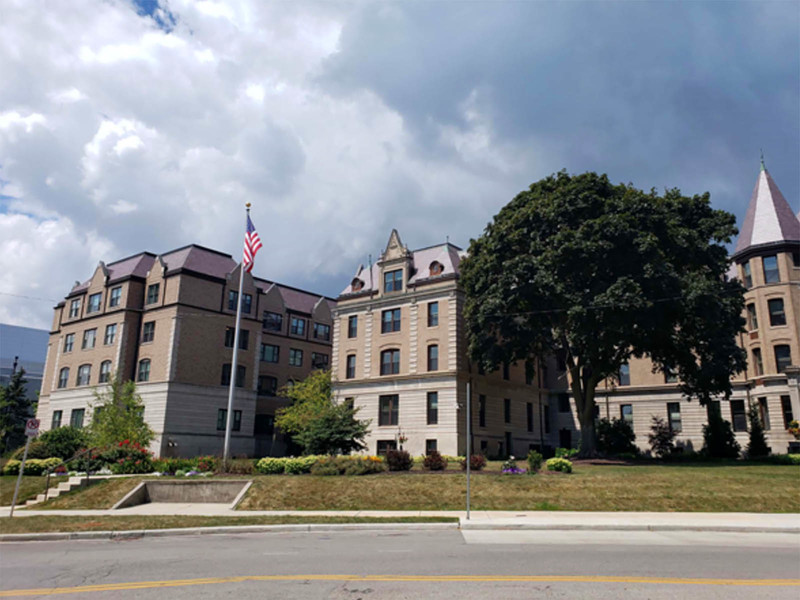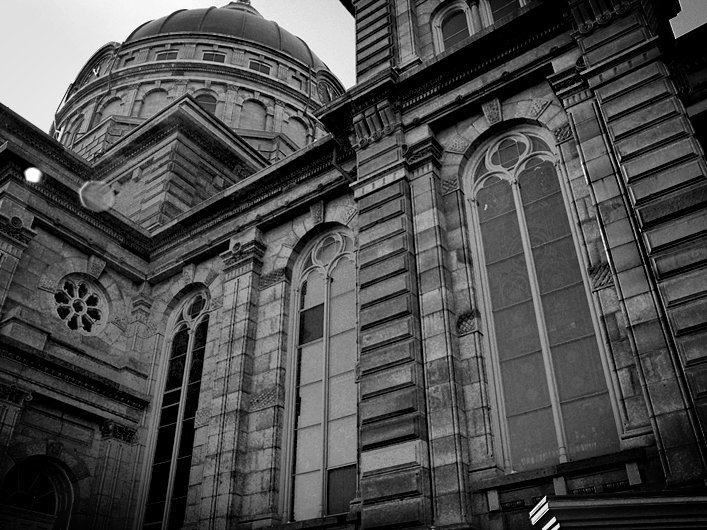In the library of the Schuster Mansion, next to historic photographs of the wealthy and eccentric family who built the house, there is a small silver frame on one of the bookshelves. It contains modern-day photographs of the renovated Belle Epoque home, with a Bible verse from the book of Jeremiah: "For I know the plans that I have for you, says the Lord."
There were definitely plans in the works for Illinois residents Laura Sue and Rick Mosier when they came up to Milwaukee on a whim several years ago. Laura Sue had a two-for-one coupon to the Brumder Mansion Bed and Breakfast. She and her new husband Rick had no plans for the weekend other than to enjoy the city and relax.
By Sunday, they had decided to become innkeepers.
Now they are the owners and proprietors of the Schuster Mansion Bed and Breakfast at 3209 W. Wells St., a thriving Victorian-style inn that is housed in the 10,000-square foot mansion built in 1891 by Mukwonago’s tobacco king George J. Schuster.
The unlikely story of how the Mosiers came to own the mansion as a bed and breakfast is just one of the stories Laura Sue relates in her twice-monthly Victorian High Tea, one of the most popular ongoing education and community events at the inn. It is opened to guests of the B&B as well as members of the community, and Mosier says she’s had people come from far and wide to be part of this now-beloved Schuster tradition.
She got the the idea to introduce the high tea to the event calendar four years ago, shortly after she and her husband had bought and restored it.
"(The mansion) was the perfect venue. People would say, ‘Oh, do you do high teas here?’ And I’m like, ‘Uh, no.’ (At that time) we were so busy just trying to get the mansion ready to be open for guests, we couldn’t even think about a high tea." The inn now boasts four suites and two rooms, each uniquely furnished.
But Mosier, a lifelong entrepreneur with a background in interior and fashion design as well as a love of history, saw an opportunity in the suggestions. She started to think about how to put her own spin on the concept of "high tea."
On the first and second Thursday of each month, Mosier dons custom-made period-style costumes and opens the inn for a high tea offering a full meal of homemade sandwiches, pastries and scones.
Each month has a different theme, and each season offers different menu items. She was inspired by menu at The Seasons in Long Grove, Ill., which changes based on the time of year.
"You can come here four times in one year and eat something totally different (each time)," she says.
Before being seated, guests are invited to choose their own teacup from an impressive rack of fine china pieces – some genuine porcelain – that Mosier has collected over years spent scouring the region’s flea markets.
"It adds that little extra flare," she says. "They’re all different. It’s kind of cool to see what each person picks."
Guests are then invited to choose from a "buffet" of seven different loose-leaf teas manufactured by the prestigious Harney & Sons, the same brand favored by the Waldorf Astoria. All food is baked from scratch, including the homemade jam and Devonshire clotted cream that Mosier’s English guests have assured her is "spot-on."
So what, exactly, constitutes "high tea?" It’s something Mosier begins each event by explaining.
"It is a meal, so make sure you come hungry," she tells guests. A high tea must served – appropriately – at a high table with a full menu. A low tea would be served a low table in the ladies’ parlor with a plate of cookies or pastries. "Afternoon tea is simply a pot of tea in the afternoon, wherever you choose to enjoy it," she explains.
Mosier goes to great pains to make her Victorian high tea historically accurate, but there are some necessary anachronisms which she is also careful to explain. High tea should be served at 3 p.m., but to accommodate modern appetites she serves it two hours earlier. Victorians never drank water at a meal, believing it to impede digestion, but thankfully for her guests, Mosier believes in hydration.
And finally, all sandwiches and pastries are served on a three-tiered rack; protocol dictates that guests must work their way up the rack, beginning with the cucumber and tuna finger sandwiches on the lowest tier and saving the scones and pastries on the highest tier for last.
"But if you want to start with that scone at the top, go for it," she tells her guests. "I’m not going to stop you."
What makes this high tea different is that it is an "event" – Mosier’s own words, and appropriate ones, because the Schuster Mansion Bed and Breakfast is not a restaurant, and she is not a waitress. She’s actually a lot more than that. During the two-hour program, Laura Sue Mosier takes on the role of hostess, historical interpreter, story-teller and tour guide.
But don’t mistake this for a boring museum-style monologue. Mosier brings back to life the story and customs of the people who inhabited the mansion over its 120-year history. Expect to hear all the titillating details on the Schuster family (marital infidelity, suicide, and free-love communes are just some that bear mentioning), a brief history of tea, interesting facts about Victorian lifestyle (women commonly suffered from bladder infections, as their heavy dresses prevented them from urinating).
Mosier also provides a comprehensive history of the structure’s architecture and information about the development of the neighborhood.
The mansion was converted into eight apartment units in 1921 after George Schuster’s death; the beautiful grand staircase in the foyer was dismantled and the house was subdivided. It may seem like a tragedy, but the manion’s conversion into multi-family housing actually saved it during the Depression when so many beer peerage residences in the area were razed. Astonishingly, many of the mansion’s original features remain, including a beautiful conservatory.
Victorian high tea at the Schuster Mansion used to be held only once a month, until an October 2012 feature in Tea Time magazine upped the popular demand and compelled Mosier to produce the program twice a month and twice a week in December. If you can guarantee ten or more people, she’ll host a private tea, and wedding and baby shower events are also offered.
Upcoming events at the Schuster include a program on the life and times of Jane Austen and an interactive luncheon centered on the sailing of the Titanic. Mosier is also actively pursuing a museum license for the house, which will enable the public to visit and self-tour the Schuster mansion on weekdays.
It may not have been part of the plan, but restoring and reviving the once-dilapidated Schuster mansion – and reintroducing a beloved Victorian tradition – has become Laura Sue Mosier’s vocation.
Colleen Jurkiewicz is a Milwaukee native with a degree in English from the University of Wisconsin-Milwaukee, and she loves having a job where she learns something new about the Cream City every day. Her previous incarnations have included stints as a waitress, a barista, a writing tutor, a medical transcriptionist, a freelance journalist, and now this lovely gig at the best online magazine in Milwaukee.







